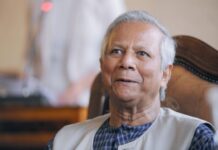
Although government efforts to contain Covid-19 are plagued by various scams and sheer mismanagement, Health Minister Zahid Maleque thinks his ministry has performed well in handling the crisis.
Mortality rate is the yardstick he used for evaluating the performance.
“How well you fare in exams depends on the marks you get. I think the health ministry has got good marks,” the minister told reporters on Wednesday.
“What is the number? Our death rate is only 1.5 percent, and that is the biggest mark. The number is 6 percent in the US, 10 percent in Europe and 6 percent in the whole world. This is the biggest yardstick to decide whether we have done well or not,” Zahid said.
But as soon as he made the comment, a few questions began swirling around: How has the ministry really done and is the yardstick appropriate to measure its performance.
The ministry, among other relevant authorities, had at least three months to prepare, but they apparently failed to grasp the gravity of the situation. They did very little to prevent the virus from entering the country.
They apparently failed to ensure isolation and quarantine facilities for those returning from abroad.
The health minister, in the meantime, kept assuring the countrymen that all preparations were in place in this regard and that there was nothing to panic about.
But when the crisis began to unfold in early March, people became the ultimate victims. They continue to remain so till date, thanks to seamless inefficiencies on the part of the ministry and its subordinate agencies, said experts.
These bodies ended up taking inappropriate decisions, they came up with delayed actions; all contributing to further spread of the virus.
Till yesterday, 2,801 people died while the total number of coronavirus cases reached 2,16,110.
At the early stage of the outbreak, the authorities trailed behind in taking decisions on providing necessary protective gear to healthcare professionals. They also could not ensure that the infected ones remain in isolation and those coming to their contact are tracked down and quarantined.
They also left evidence of haphazard thinking while making decisions on imposing lockdowns and enforcing them.
The ministry has also been seen as culpable for not introducing aggressive testing and contact tracing, which are crucial in fighting the contagious virus.
On the contrary, the number of daily tests has declined over the weeks.
All these only helped the virus spread. The numbers of people contracting it and the resulting deaths are mounting every day.
Also, right from the beginning, a lack of coordination among the ministry, the Directorate General of Health Services (DGHS) and the Institute of Epidemiology, Disease Control and Research (IEDCR) has been quite evident.
On April 6, less than a month after the first cases of coronavirus were reported, the health minister voiced his frustrations regarding the way the situation was being handled.
“I have been made the chairman of the national committee [on Covid-19] because I’m the health minister. The committee, however, takes decision without our [the health ministry’s] knowledge,” he had told a discussion of healthcare professionals during that time.
Then emerged an internal feud between the minister and the then health service division secretary Md Asadul Islam over allegations of supplying sub-standard N-95 masks to government hospitals during April. The feud led to transfer of the secretary.
A bigger feud, however, came to light this month after the disturbing discovery of Regent Hospital’s involvement in issuing fake Covid-19 certificates.
A rift appeared between the ministry and the DGHS as the government bodies traded blames over taking responsibility for signing a deal with the private hospital.
Eventually, Prof Abul Kalam Azad resigned as the director general of DGHS on Tuesday.
Dr Abul Bashar Mohammad Khurshid Alam, a professor at Dhaka Medical College (DMC), replaced Azad, according to circular issued yesterday.
THE YARDSTICK
Health Minister Zahid used mortality rate as the yardstick to judge his ministry’s performance. He said the rate was only 1.5 percent, but this statement is also not correct.
According to World Health Organisation’s Bangladesh Situation Report, the mortality rate in the country stood at 1.29 percent as of July 20, while the global rate was 7 percent.
The fatality rate is measured by dividing the number of deaths by the number of confirmed cases.
This means fewer people are dying due to the virus here in comparison to the other countries, particularly in the European nations.
While experts are not yet sure why it was happening, but one reason could be that fewer tests were exposing fewer cases, they said.
Countries like the US and the UK have carried out hundreds of thousands of Covid-19 tests, while the number is far below in Bangladesh.
As of yesterday, the US, the worst affected country, tested 50,739,053 samples. The death toll stood at 146,199, according to worldometers.info.
Let’s look at the two worst-hit European countries — Italy and Germany.
Germany has tested 7,418,812 samples so far. Some 9,182 people died so far. The country is now the 17th worst affected country in the world in terms of number of cases detected.
On the other hand, Italy tested 6,354,730 as of yesterday and 35,082 people died, according to worldometer.info.
Bangladesh is currently the 16th worst hit country, but only 1,079,007 samples have been tested so far.
And the number of tests is on the decline. The highest number of tests a day was done on June 26 when 18,498 samples were tested. The average number of tests has declined to 12,398 and it was to 10,625 on Sunday, the lowest in July.
Health experts have pointed out time and again that if there had been enough tests, more patients would have been detected, since the population density is high. Besides, there are unreported deaths from Covid-19 across the country, especially in villages.
Some 1,776 people have died after showing Covid-19 symptoms from March 22 to July 11 in the country, said a report of Dhaka University’s Centre for Genocide Studies.
All the deaths, however, might not have been related to Covid-19, as many of the deceased tested negative, it said.
The experts pointed to South Asia’s young demographics as a potential reason why the total number of deaths is not as high as it could be.
European countries have a higher fatality rate because of its greater number of aged people.
The average life expectancy in some European countries such as Italy, Spain and France is above 80 years. They have a huge number of elderly persons.
But the average life expectancy is 72 years in Bangladesh and it has a huge chunk of median aged people.
The median age of a population is the point at which half the population is older than that age and half is younger.
The median age is 26.7 years in Bangladesh.
Although the health minister sounded complacent, there is no room for complacency. And it is better to compare situations among countries using projection models under the same parameters, including demography, disease trend and others, the experts added.









